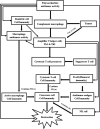Polysaccharides; Classification, Chemical Properties, and Future Perspective Applications in Fields of Pharmacology and Biological Medicine (A Review of Current Applications and Upcoming Potentialities)
- PMID: 33526994
- PMCID: PMC7838237
- DOI: 10.1007/s10924-021-02052-2
Polysaccharides; Classification, Chemical Properties, and Future Perspective Applications in Fields of Pharmacology and Biological Medicine (A Review of Current Applications and Upcoming Potentialities)
Abstract
Polysaccharides are essential macromolecules which almost exist in all living forms, and have important biological functions, they are getting more attention because they exhibit a wide range of biological and pharmacological activities, such as anti-tumour, immunomodulatory, antimicrobial, antioxidant, anticoagulant, antidiabetic, antiviral, and hypoglycemia activities, making them one of the most promising candidates in biomedical and pharmaceutical fields. Polysaccharides can be obtained from many different sources, such as plants, microorganisms, algae, and animals. Due to their physicochemical properties, they are susceptible to physical and chemical modifications leading to enhanced properties, which is the basic concept for their diverse applications in biomedical and pharmaceutical fields. In this review, we will give insight into the most recent updated applications of polysaccharides and their potentialities as alternatives for traditional and conventional therapies. Challenges and limitations for polysaccharides in pharmaceutical utilities are discussed as well.
Keywords: Biological activities; Carbohydrates; Future prospects; Pharmacological applications; Polysaccharides.
© The Author(s), under exclusive licence to Springer Science+Business Media, LLC part of Springer Nature 2021.
Conflict of interest statement
Conflict of InterestThe authors declare that there are no conflicts of interest.
Figures






References
-
- Yang L, Zhang LM. Chemical structural and chain conformational characterization of some bioactive polysaccharides isolated from natural sources. Carbohydr Polym. 2009;76:349–361. doi: 10.1016/j.carbpol.2008.12.015. - DOI
-
- Ngwuluka NC. Responsive polysaccharides and polysaccharides-based nanoparticles for drug delivery. Amsterdam: Elsevier; 2018.
Publication types
LinkOut - more resources
Full Text Sources
Other Literature Sources
